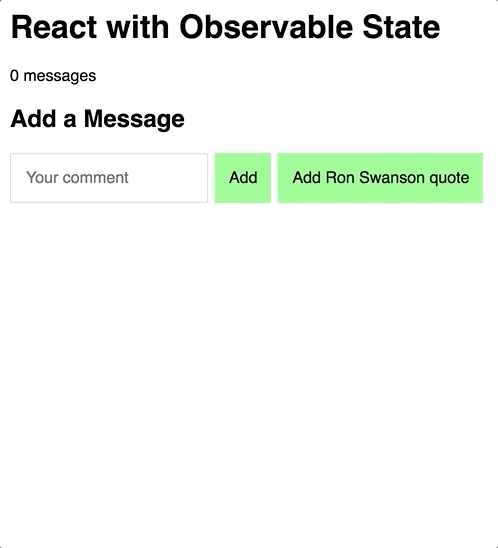A proof-of-concept React app using RxJS as its sole means of state management, in lieu of Redux or MobX.
Redux, despite common complaints of heavy boilerplate, is a reasonable approach to managing state in React and non-React applications alike. Typically, one might introduce Redux Thunk when handling more complex, heavily-asynchronous side effects, but an alternative I have used extensively is Redux Observable, a middleware that supports RxJS observables as actions; this is an attractive proposition when building an app which involves the consumption and heavy transformation of various source streams. Redux Observable, while a valiant effort, has its own concept of epics, thus one must master this on top of RxJS and Redux, all of which have specific nomenclature.
This proof of concept thus establishes the feasibility of cutting out these middlemen and using RxJS exclusively for managing the state mutations and retrieval within a React app.
The app is a straightforward React app that renders user-submitted messages, as well as displaying quotes from the Ron Swanson Quotes API.
I will be writing a fully-fledged post on this app soon, and might even be giving a talk on it somewhere (TBA very soon), but for now, here's a brief tour.
A higher-order component that subscribes to a given observable, updating the wrapped component on each emission and unsubscribing when it is unmounted. This makes use of the proposed React Hooks API.
The component responsible for rendering the form, demonstrating the usage of connectToObservable as well as dispatching actions with the toNextState function.
The module that houses appState, a BehaviorSubject with a buffer size of one, as well as the default state and the withState and toNextState functions; the former is used to invoke the particular reducer returned by an action with the current state, and the latter pushes the emissions of a reducer to appState.
The action-reducers consumed by the app. As roughly described above, an action will return a reducer; this is a function that takes the current state and either merges it with the payload of an action (i.e. addMessage, onQuoteLoading, onQuoteError), or emits the results of multiple action-reducers (i.e. addRonSwansonQuote).
To set up:
git clone https://github.com/jamesseanwright/react-observable-state.gitcd react-observable-statenpm i
Then you can run one of the following commands:
npm run dev- builds the project with rollup.js and serves it from port 8080npm test- runs the unit tests (append-- --watchto launch Jest's watch mode)
